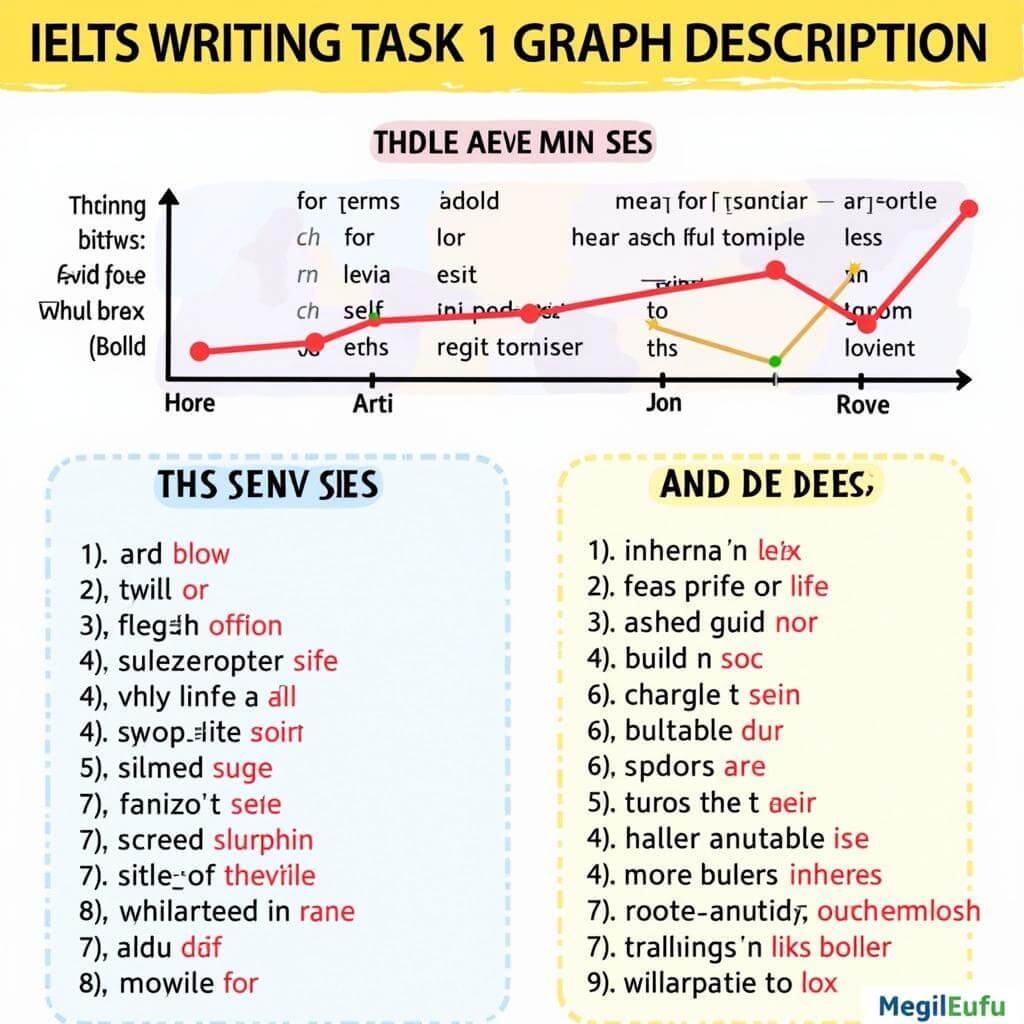IELTS Writing Task 1 can be challenging, especially when it comes to graph descriptions. This guide will provide you with effective strategies for tackling Task 1 graph descriptions, helping you boost your score and confidence. Whether you’re a beginner or looking to refine your skills, these tips will prove invaluable in your IELTS journey.
Understanding the Task
Before diving into strategies, it’s crucial to understand what IELTS Writing Task 1 entails for graph descriptions:
- You have 20 minutes to complete the task
- You need to write at least 150 words
- You must describe the information presented in a graph, chart, table, or diagram
- You should summarize the main features and make comparisons where relevant
Now, let’s explore the key strategies to excel in this task.
1. Analyze the Graph Carefully
The first step is to spend 2-3 minutes analyzing the graph thoroughly:
- Identify the type of graph (line graph, bar chart, pie chart, etc.)
- Read the title and axes labels carefully
- Note the units of measurement
- Identify the time period (if applicable)
- Look for any significant trends, peaks, or troughs
How to practice grammar for task 1 is crucial for accurately describing these elements.
2. Plan Your Response
After analysis, take another 2-3 minutes to plan your response:
- Decide on the main features you’ll highlight
- Choose relevant data points to support your description
- Organize your ideas into a logical structure
Remember, a well-structured response is key to a high score.
3. Write a Clear Introduction
Your introduction should:
- Paraphrase the question
- Provide an overview of the main features
For example:
“The line graph illustrates the changes in global coffee production across five major producing countries from 2010 to 2020.”
4. Use Appropriate Language for Descriptions
Using grammar for accurate descriptions is essential. Here are some tips:
- Use a variety of verbs to describe trends (increase, decrease, fluctuate, remain stable)
- Employ adverbs to add precision (sharply, gradually, significantly)
- Use comparative and superlative forms to highlight differences
Dr. Sarah Thompson, a leading IELTS examiner, emphasizes:
“Candidates who use a range of precise vocabulary to describe trends often score higher in Task 1.”

5. Focus on Key Features
When describing the graph:
- Highlight the most significant trends or changes
- Provide specific data points to support your observations
- Compare and contrast different elements when relevant
Improving task 1 data analysis skills will help you identify and describe these key features effectively.
6. Use Appropriate Tenses
Pay attention to the time frame of the graph:
- Use past tense for historical data
- Use present perfect for trends continuing to the present
- Use future tense for predictions or projections
7. Organize Your Response Logically
Structure your response in a clear, logical manner:
- Introduction
- Overview of main features
- Detailed description of key points
- Conclusion (if word count allows)
This organization helps the reader follow your description easily.
8. Practice Comparative Language
Using comparatives in writing task 1 is crucial for effective graph descriptions. Some examples include:
- “Coffee production in Brazil was significantly higher than in Vietnam throughout the period.”
- “Among the five countries, Colombia showed the most consistent growth.”
9. Enhance Your Vocabulary
How to write task 1 with better vocabulary is a key strategy for improving your score. Aim to use:
- Precise nouns and adjectives
- A variety of synonyms
- Academic collocations
Professor Michael Chen, an IELTS preparation expert, advises:
“Building a robust vocabulary specific to graph descriptions can significantly enhance the quality and accuracy of your Task 1 responses.”
10. Review and Edit
If time allows, spend the last 2-3 minutes reviewing your response:
- Check for grammar and spelling errors
- Ensure you’ve covered all main features
- Verify that your response is at least 150 words
Conclusion
Mastering IELTS Writing Task 1 graph descriptions requires practice and the application of effective strategies. By following these tips, analyzing graphs carefully, using appropriate language, and focusing on key features, you’ll be well-equipped to tackle this part of the IELTS Writing test with confidence. Remember to practice regularly and seek feedback to continually improve your skills in describing graphs and charts.
FAQs
-
How long should my Task 1 graph description be?
Your response should be at least 150 words, but aim for 170-190 words to ensure you’ve covered all main points without being overly verbose. -
Should I include my own opinion in a Task 1 graph description?
No, Task 1 requires objective description only. Save your opinions for Task 2. -
What if I can’t understand all the information in the graph?
Focus on describing the main trends and features you can confidently interpret. It’s better to be accurate with less information than to make incorrect assumptions. -
Is it necessary to provide a conclusion in Task 1?
While not always essential, a brief conclusion can round off your response nicely if you have the word count to spare. -
How can I improve my speed in analyzing graphs?
Regular practice with a variety of graph types will help you develop quicker analysis skills. Time yourself to simulate exam conditions.